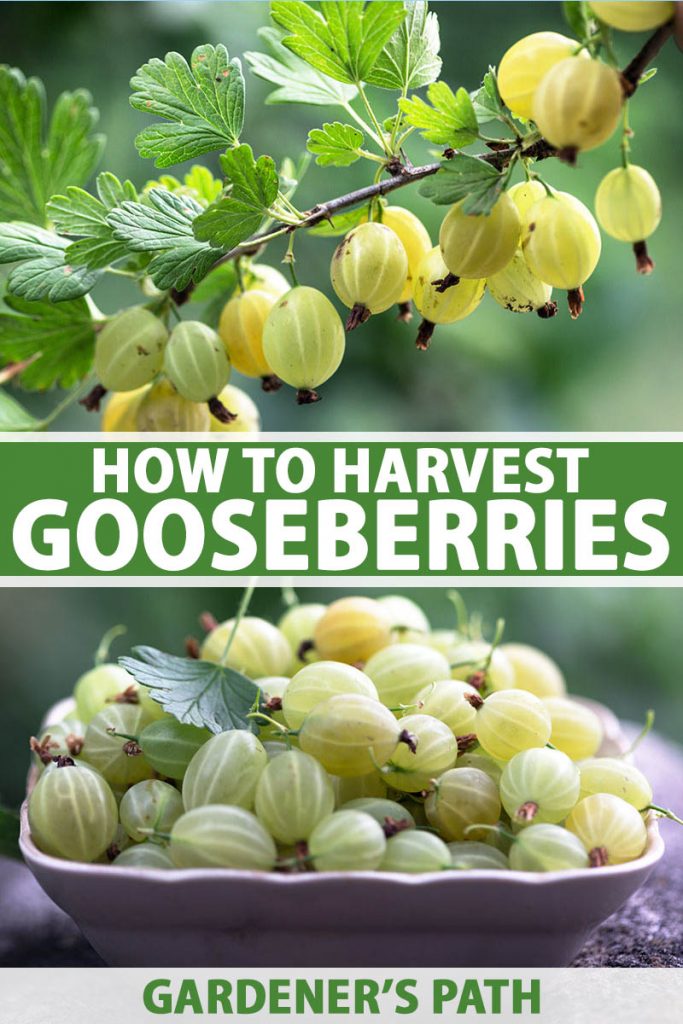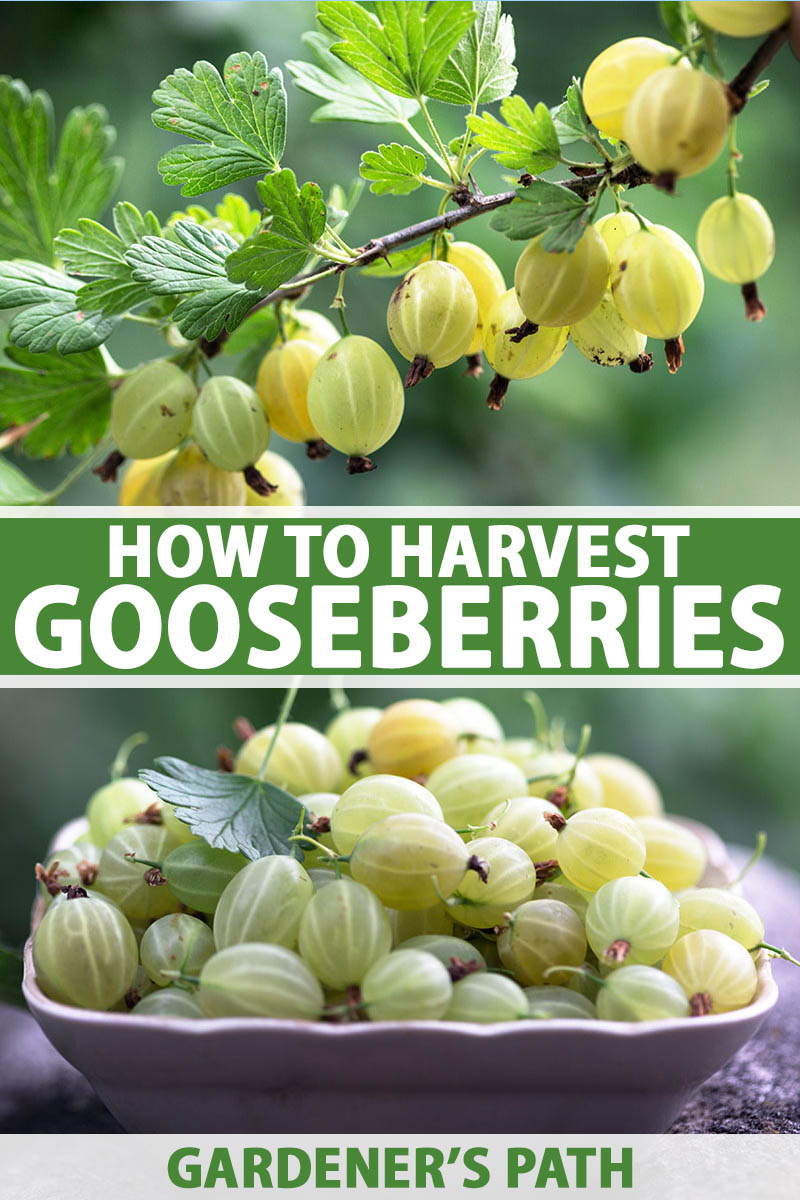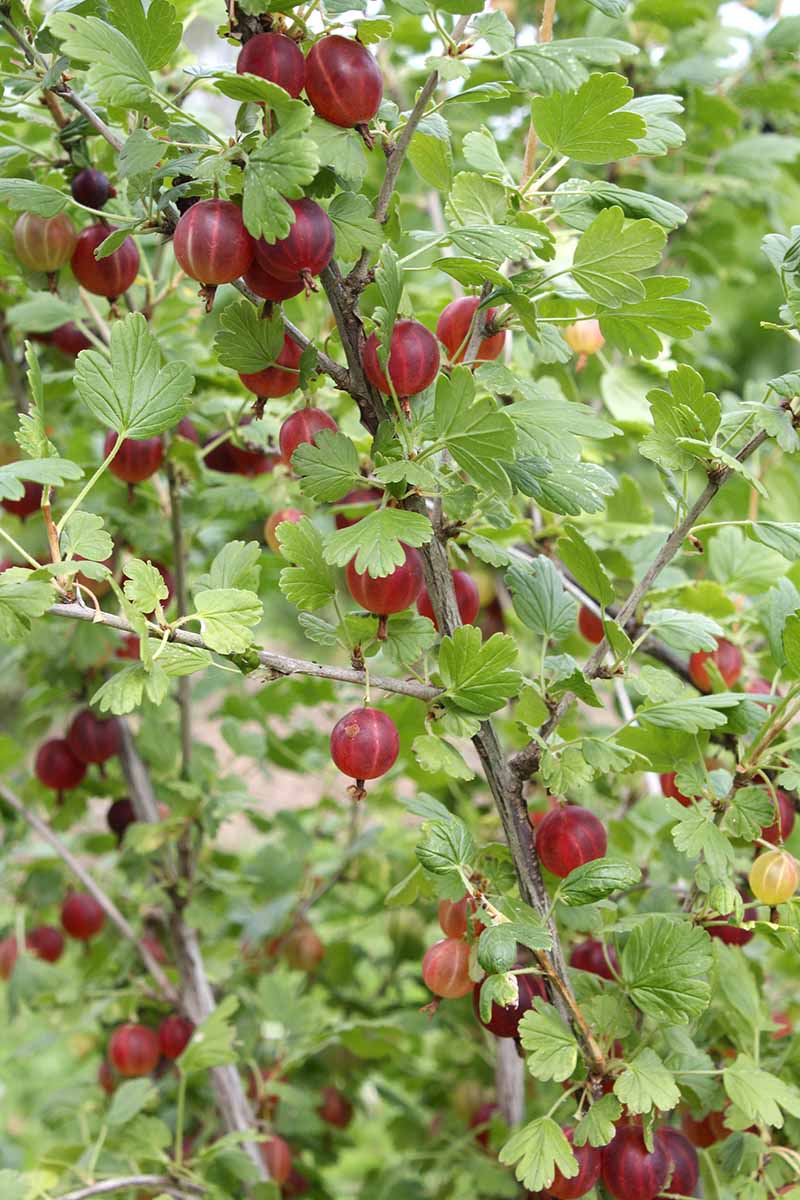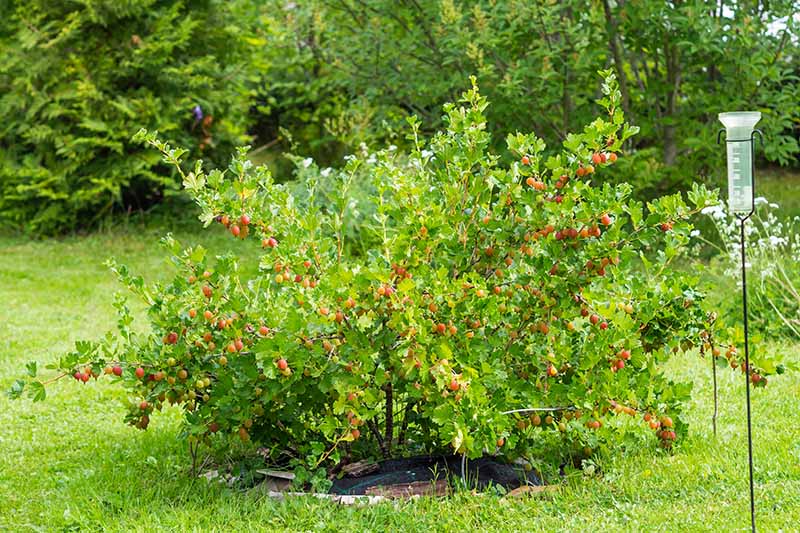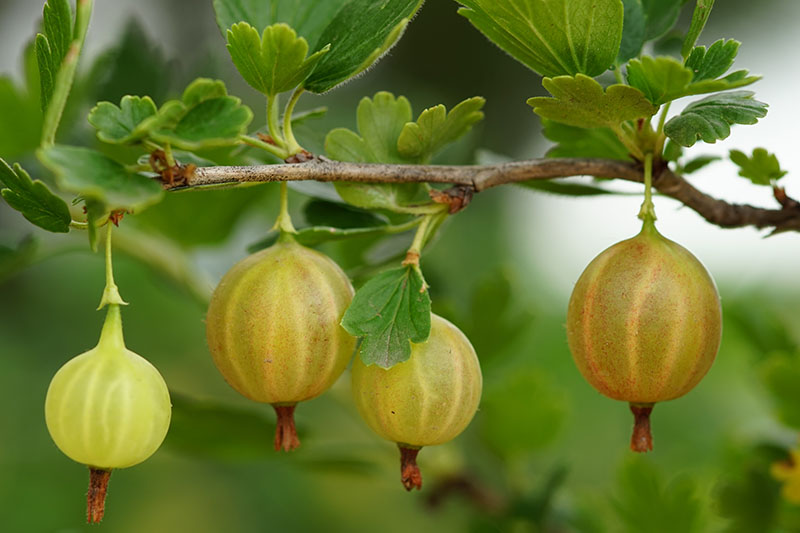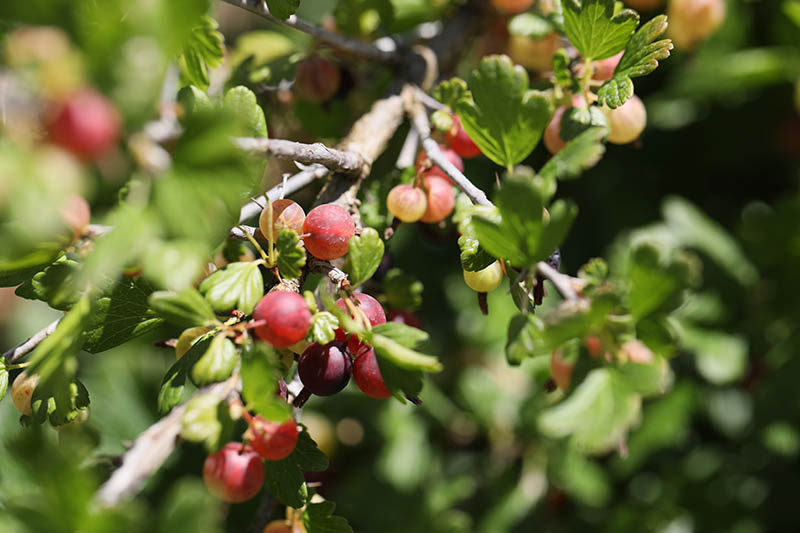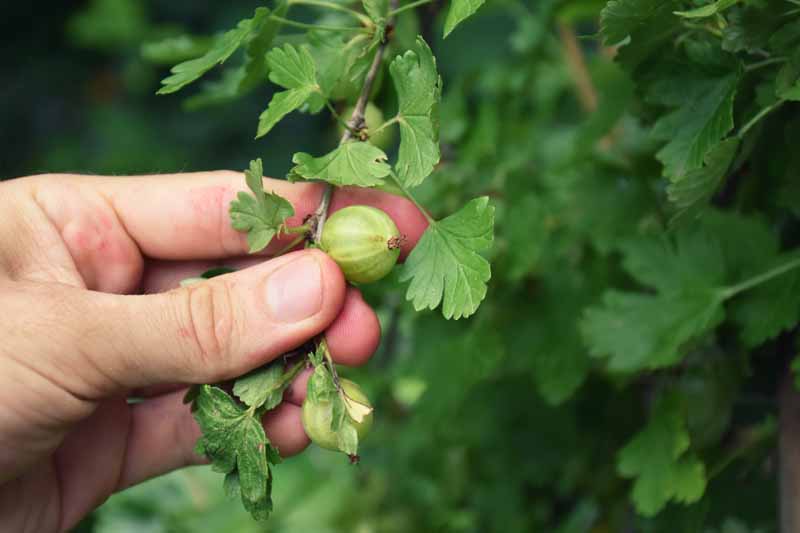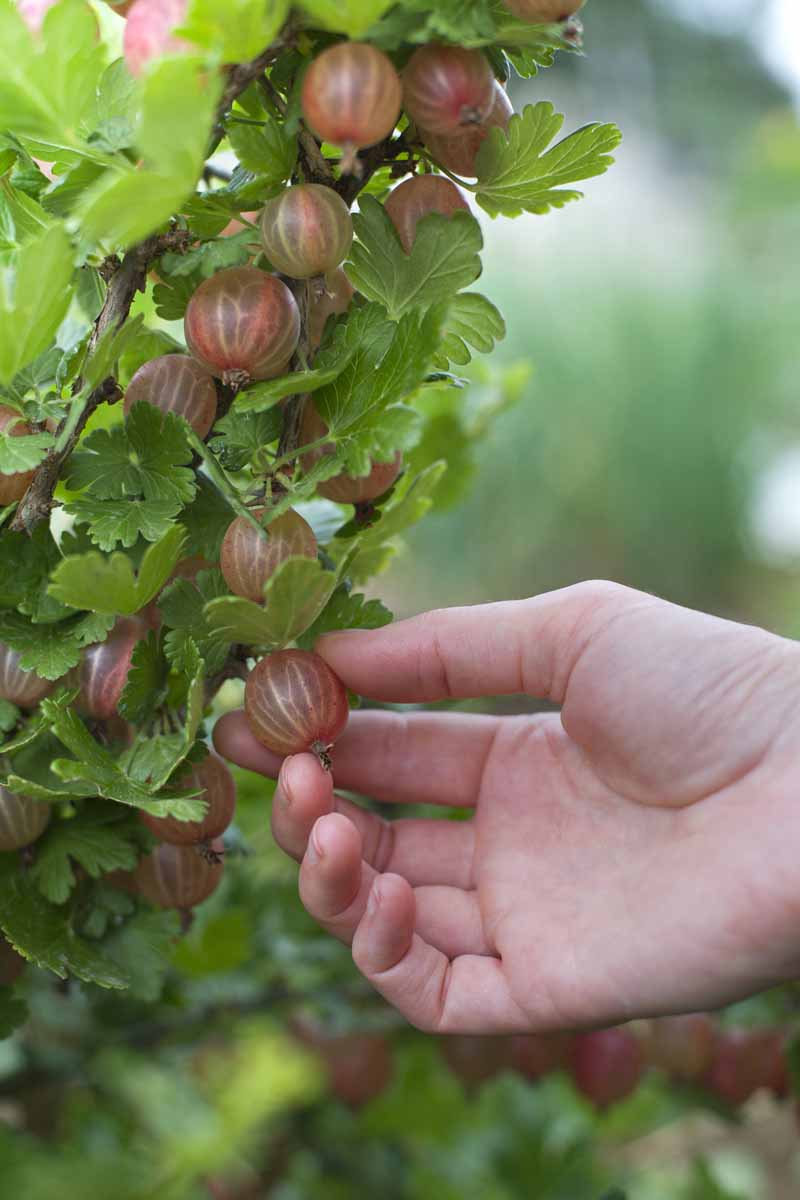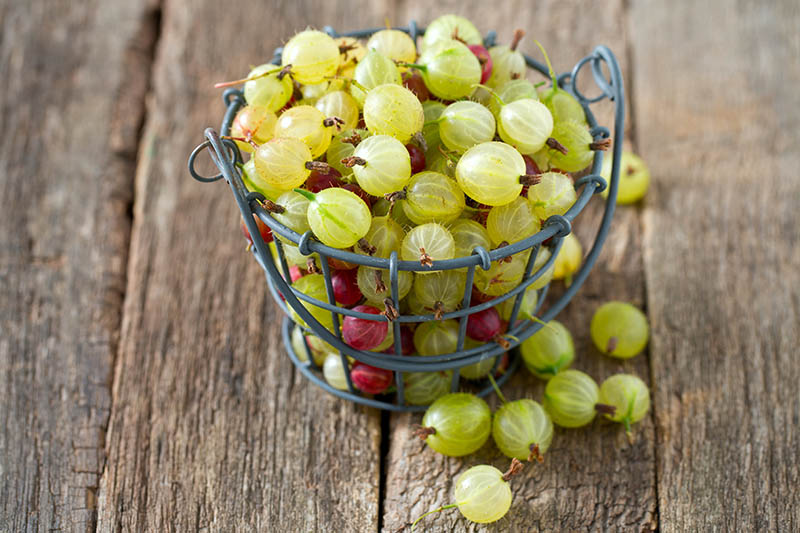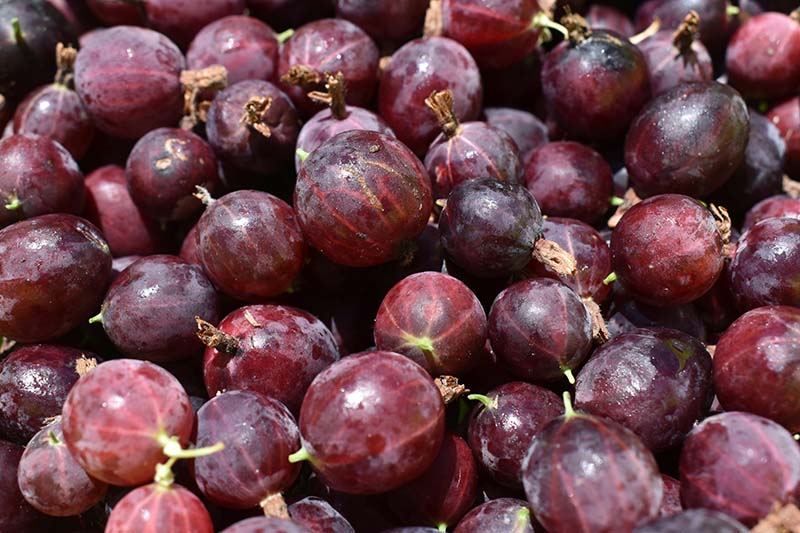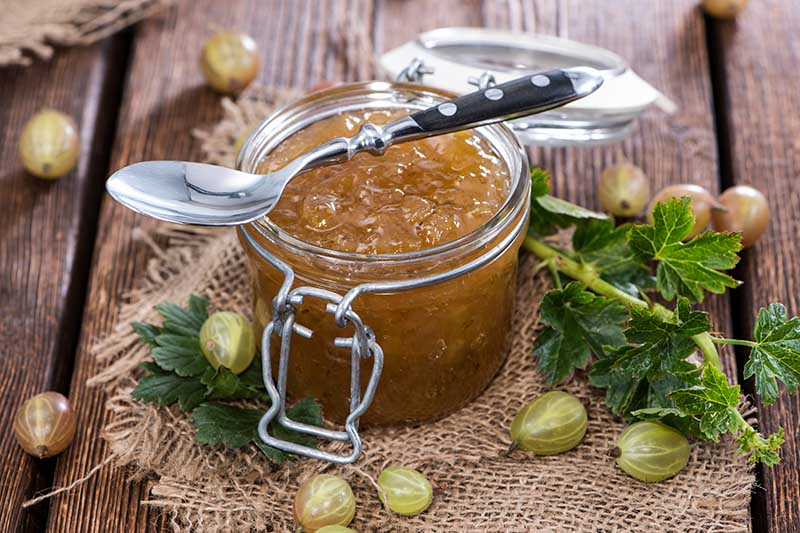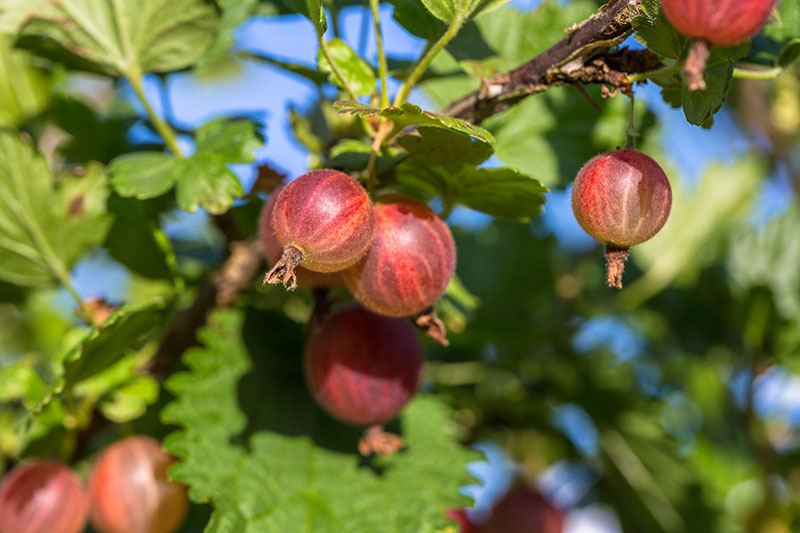In my area, the end of June means it’s time to start putting these flavorful fruits into pretty much every meal. That means chopped gooseberries and nuts on my morning yogurt, pickled gooseberries on my afternoon sandwich, and grilled gooseberries on my evening fish. If you’re growing your own bushes or you’re hoping to pluck some at a local U-pick farm, you’re probably wondering when and how to get the fruits away from those spiky bushes and into your mouth. We link to vendors to help you find relevant products. If you buy from one of our links, we may earn a commission. So get those gloves and berry baskets ready – it’s harvest time!
When to Harvest Gooseberries
Once you get your gooseberry plants in the ground, it takes them about three years to reach the point where you can get a full harvest off of a plant.
In the first year, you should rub or pick off any flowers to encourage the plant to focus on developing a healthy root system. That means no fruits for at least a year (insert sad face emoji here). In the second and possibly third year, you’ll get a smaller harvest, but you’ll still be able to enjoy the tangy sweet fruits of your labor. After that, you’re off to the races! Unless you’ve selected an early-maturing variety, most gooseberries start producing in late spring or early summer, around the end of June or the beginning of July. Of course, this depends on where you live. They’ll keep producing – again, depending on the variety and location – as late as the beginning of September.
So, when can you be sure it’s time to dig in? Since the berries don’t fall off the bush until they’ve become over-ripe, and because they don’t all ripen all at the same time, you can’t wait for berries to start falling to know when it’s time to break out the baskets. To complicate things further, if you want something with a tart flavor, you can pluck immature fruits starting several weeks before they ripen. Basically, gooseberry harvest time is anytime the fruits are on the bush! Okay, not really, but you do have a lot of leeway to work with. Assuming you want to harvest your fruit at peak ripeness, when the berries are fully sweet, here’s what you need to know:
First, look into the mature size of the fruits that your particular cultivar produces. Watch for the fruits to reach this size. Then, look at the little flower clinging to the bottom end of the berry. If it still has color and isn’t totally dried up, the berries probably aren’t ready to pick. However, once that little flower stem has turned brown and completely dry, that’s a good indicator that the fruit is ready to be plucked. You will know some berries are ready because they reach their ripe color. But you can’t always count on gooseberry fruit color to be a reliable indicator, since different cultivars have different berry colors. It’s not enough to simply be aware that you have a yellow berry plant or a red berry plant, because these colors encompass a large range of different shades. Yellow cultivars can have ripe fruits that range from pale, almost white, to deep orangey-yellow. And red berries range from pale pink to almost black. Green varieties are even trickier, since they don’t change color much as they mature. Whatever the color, specific signs of ripeness depend so much on the particulars of your chosen cultivar. If you know what your berries should look like when they’re ripe, keep an eye out for the fruits to turn their mature shade. You can also compare berries to others on the bush. Here you can see mature fruits growing next to immature fruits: A more reliable indicator is texture. The fruits should feel plump and juicy, not hard and solid. The skins should also turn translucent, if you’ve picked a variety that does this. If the cultivar that you’ve planted has hairs on the fruit, those should be present as well. To test the fruits, gently squeeze one with your finger. If it feels soft and as if it’s filled with liquid, it’s ready. I’ve found the most reliable thing to do is to harvest and taste a few berries at random points – from different spots on the plant and on different days – and decide what you like best in terms of flavor and texture. That way, you can decide when the berries are ready according to your own tastes. Once you’ve found the perfect level of ripeness, note the time of year, the color, and the size of the fruits in your gardening journal. This will give you a better idea of when they should be ready next year. If you are hoping to turn your berries into jam, pick them before they reach the fully ripe stage. They’ll have higher levels of pectin at this point. Look for berries that are full size, that haven’t quite attained their mature color. They should be somewhat hard, and should taste tart. It’s also worth noting that you can pick half of the berries when they are under ripe and let the rest stay on the plant until they’ve matured. This will give you fewer berries at one time, but they will be larger and sweeter. Some people compete to grow the largest fruit, with the winning gooseberry in 2019 weighing in at an astonishing 2.25 ounces, a world record! For reference, the gooseberries I’m nibbling on while writing this average 0.2 ounces each – and they’re pretty large.
How to Harvest
First things first: let’s talk about thorns. Most gooseberry plants have nasty thorns that make harvesting a literal pain. When you’re ready to pluck your fruits, suit up with gloves and something to cover your arms that you aren’t afraid to tear. Unlike some fruits, gooseberries can stick around on the bush for a week or two even after they’ve ripened, and not all of the fruit matures at the same time.
They also grow individually along the branches, rather than in clusters. All this means your best bet is to simply pluck the ripe fruits individually by hand, being careful to avoid the thorns if you can. Gently tug each berry loose or snip it with a pair of scissors. Keep in mind that gooseberries are tender and plump, so they can burst in your hands. Use caution and don’t get too tough with them as you pull.
If you don’t like the idea of plucking them one by one, put a tarp under the bush. Then, shake the plant gently to dislodge the berries. You might get a few under-ripe berries this way, but you can always use them to top fish, or you can pickle them. You might also lose a few berries if they burst when they hit the ground. Gooseberries ripen over a period of several weeks, so you can head out to the garden daily and snatch a few ripe berries to eat, or come out every few days for a larger harvest.
Berries that fall on the ground on their own are overripe. Let the birds have them, or pick them up and toss them in the compost bin. Depending on the variety you’ve selected, you can get up to 10 pounds of berries off of one bush.
Recipes and Cooking Ideas
Gooseberries are more versatile than other traditionally sweet berries, in my opinion. Obviously, you can use them anywhere you’d use raspberries or blueberries. But they also lend themselves nicely to savory dishes, thanks to their tart characteristics.
The fact that you can pick and enjoy them when they’re immature makes them even more versatile. Once you pick the fruits, they can last around 2 weeks in the refrigerator around 40°F. Once you have harvested the berries, don’t wash them until you’re ready to use them. When it’s time to eat, remove the stems and flower ends from the berries and give them a good rinse. You can use the immature fruits as you would rhubarb. For instance, they’re tasty baked into scones or cooked up with sugar and placed on top of yogurt, oatmeal, or meringues. To make a quick compote, combine 2 cups of gooseberries with 1/2 cup water and 1/2 cup sugar. Put everything in a pot and boil the mixture until you get the consistency you want. You can also use this to make cocktails, as a topping for ice cream or cake, or as a filling for cupcakes. Then, of course, there’s gooseberry jam. The red berries make a vibrant red preserve, but I particularly love to use green and yellow berries to make a jam that looks a bit different.
Gooseberries don’t need to be relegated to the dessert realm either. You can chop them up and use them as a topping for fish, tacos, or enchiladas, or toss them into a green salad. I particularly love to use immature berries this way. You can also puree a cup of immature berries and combine them with olive oil, chopped homegrown mint, a touch of sugar, and salt and pepper to taste. This is a fantastic dressing for salads. Sometimes, when I have a good mixture of immature and mature berries on my bush, I like to pluck them both and make a spicy salsa. I combine 4 cups of gooseberries, a chopped red onion, 3 cloves of minced garlic, 4 chopped jalapenos (less if you don’t like too much spice, or remove the ribs and seeds), 1/2 cup fresh cilantro, the juice of one lime, 2 teaspoons of sugar, and a teaspoon of salt. Chop it all up in the food processor, pulsing until the consistency is to your liking.
Put This Piquant Fruit to Work
Honestly, there’s so much to love about gooseberries that it baffles me that more people don’t grow them.
Sadly, gooseberries don’t travel well because they have thin, tender skins that burst easily when they’re ripe. That’s why, if you can find gooseberries at the store, they’re usually immature and tart. Now that you know how and when to harvest your gooseberries, you’ll never have to eat inferior fruits again. If you want to learn more about growing your own berries, or how to forage for berries in the wild, check out these helpful guides next:
How to Grow Gooseberries Juicy and Sweet Tips for Starting Your Own Berry Patch A-Foraging We Will Go: Berry Edition
Photos by Kristine Lofgren © Ask the Experts, LLC. ALL RIGHTS RESERVED. See our TOS for more details. Uncredited photos: Shutterstock.
